DSM 7 Release candidate is here!
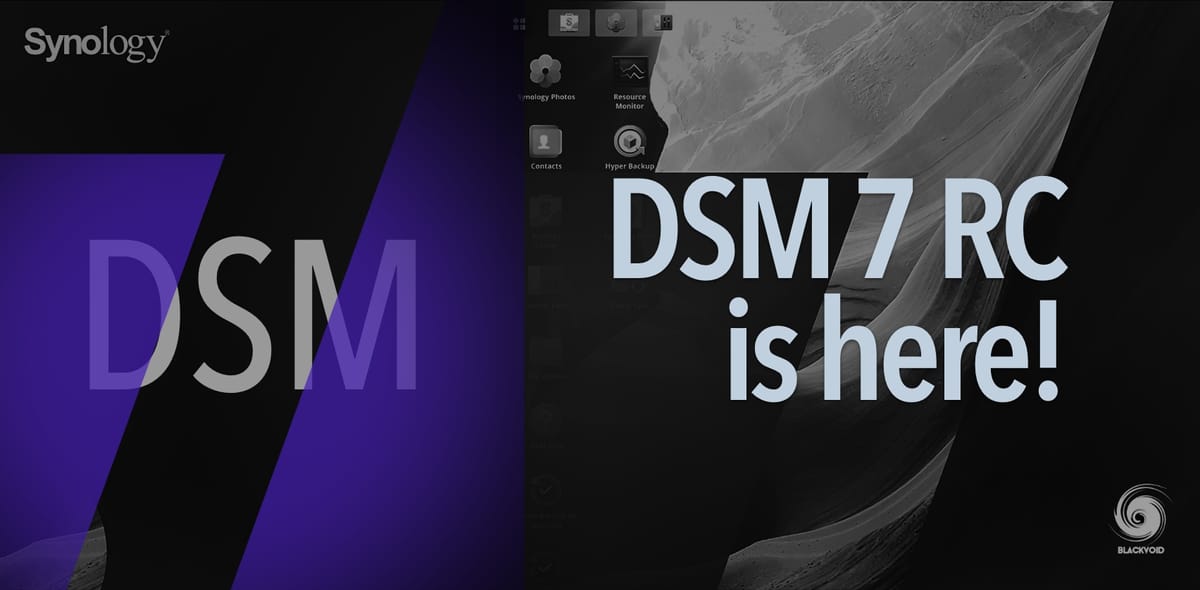
Today, Synology has pushed out a release candidate version of their new DSM 7 OS.
WARNING: this version is for EVALUATION ONLY! Do not install this version on your main production device!
Before Installation
Please read the following information before installing the release candidate
- For evaluation only - DSM 7.0 Release Candidate (RC) is for evaluation purposes only and should not be installed in production environments. We strongly recommend reading the Release notes section before installation. Synology cannot be held responsible for any damage, such as accidental data loss, caused by the release candidate.
- Not downloadable - After the installation, your NAS will not be able to roll back to any previous DSM versions. To avoid possible compatibility issues, users who installed Active Insight, Synology Photos, and Secure SignIn mobile applications during DSM 7.0 Preview/Beta programs should update the applications to the latest version after the DSM update.
To avoid possible compatibility issues, users who installed Active Insight, Synology Photos, and Secure SignIn mobile applications during DSM 7.0 Preview/Beta programs should update the applications to the latest version after the DSM update.
DSM 7 RC Installation
To install the release candidate on your Synology NAS:
- Visit Synology Download Center to download the latest DSM update to your local computer.
- Go to Control Panel > Update & Restore > Manual DSM Update to enter the Manual DSM Update Page.
- Click Browse to select the update file.
- Click OK to update your DSM. The system will reboot automatically when the update completes.
- Go to Support Center from the main menu to notify us of any issues or give suggestions.
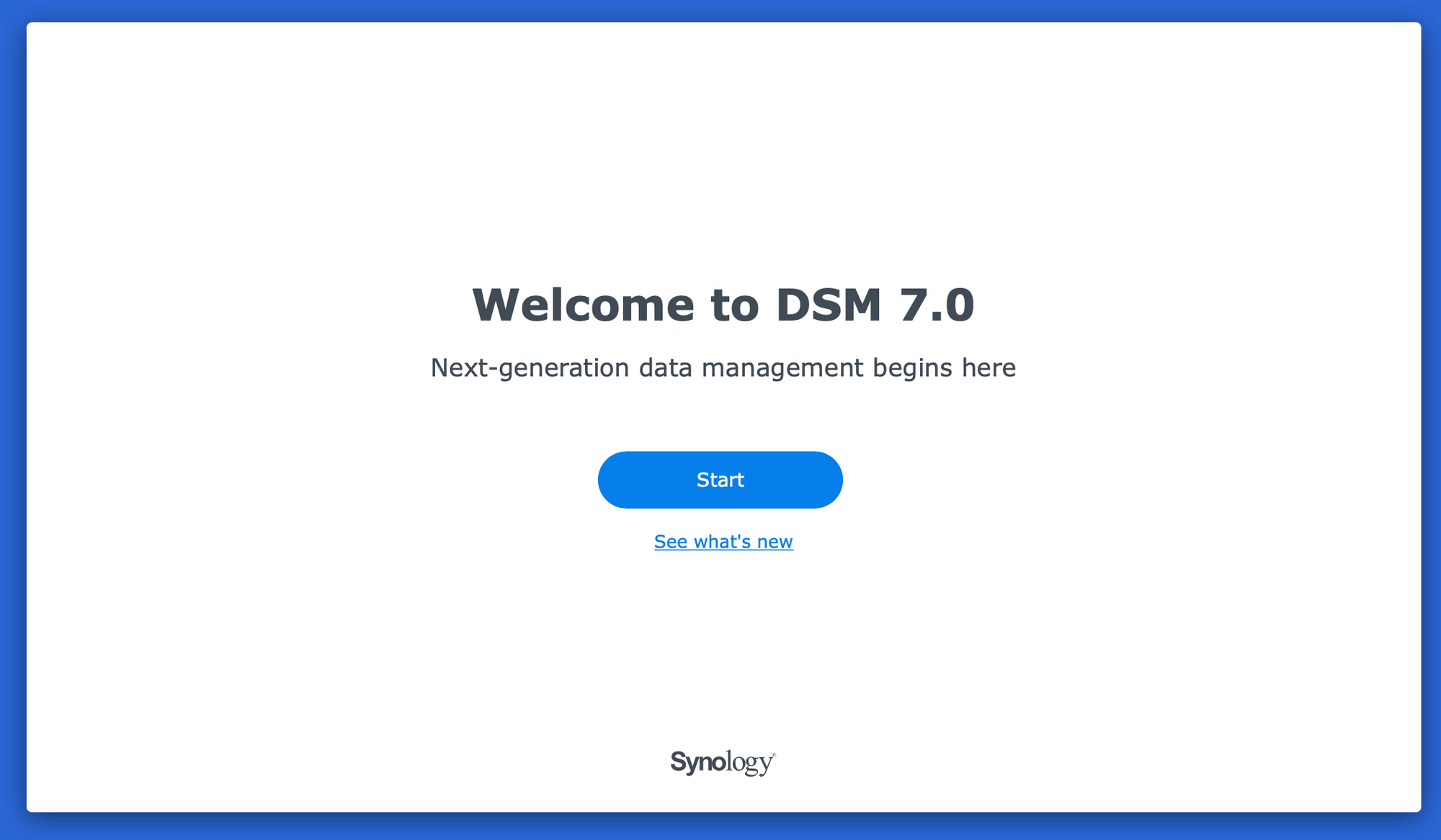
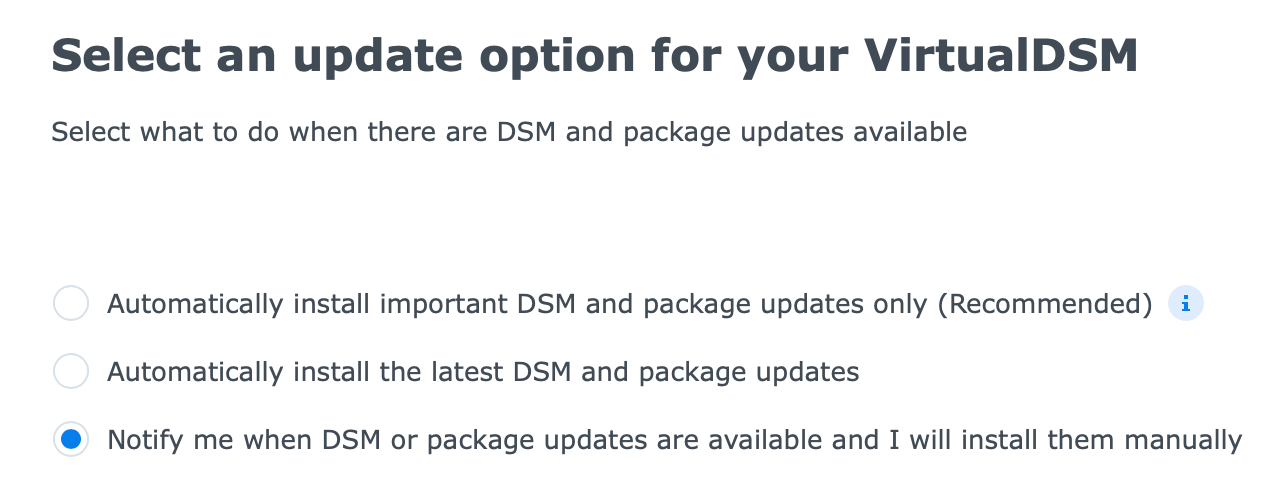
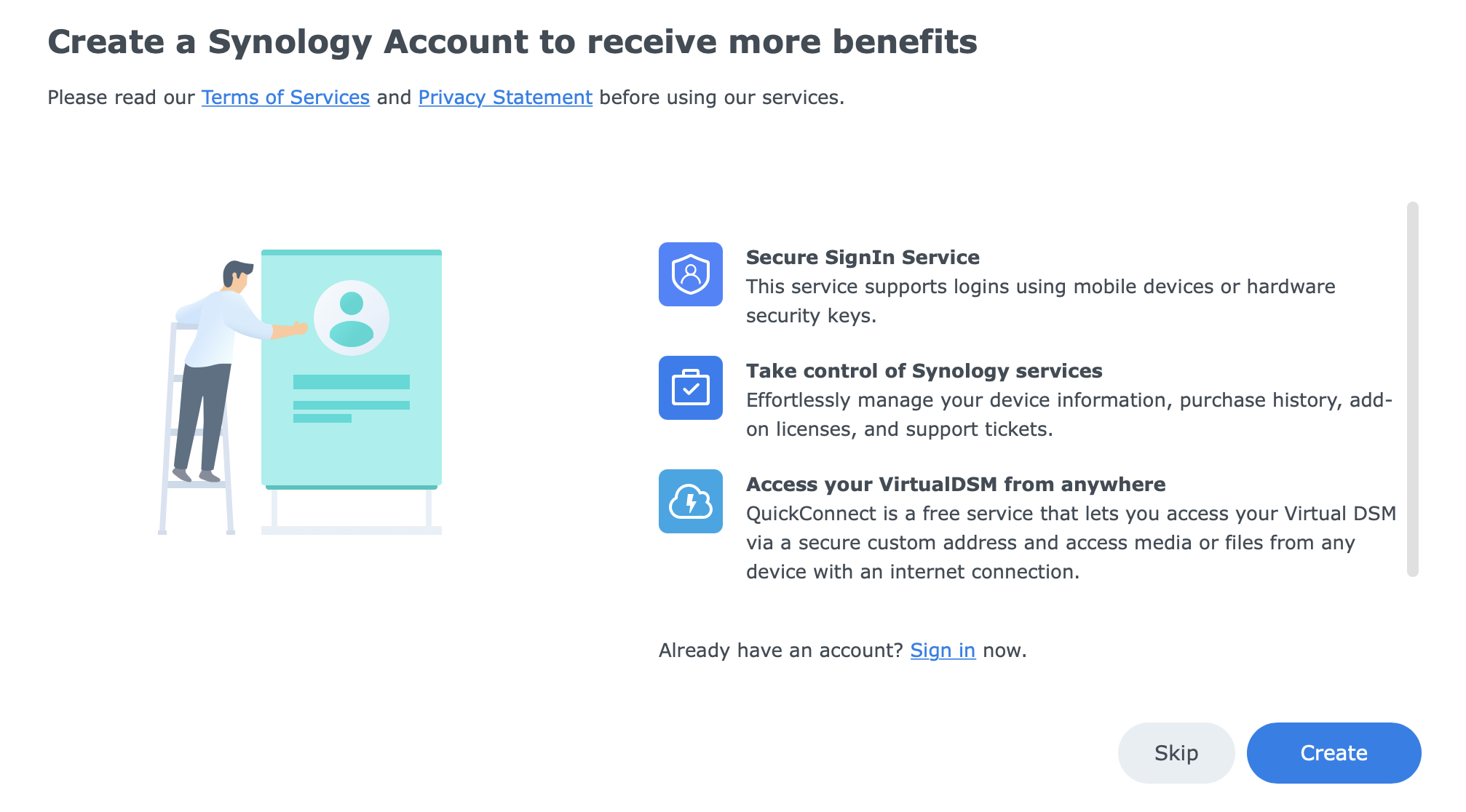
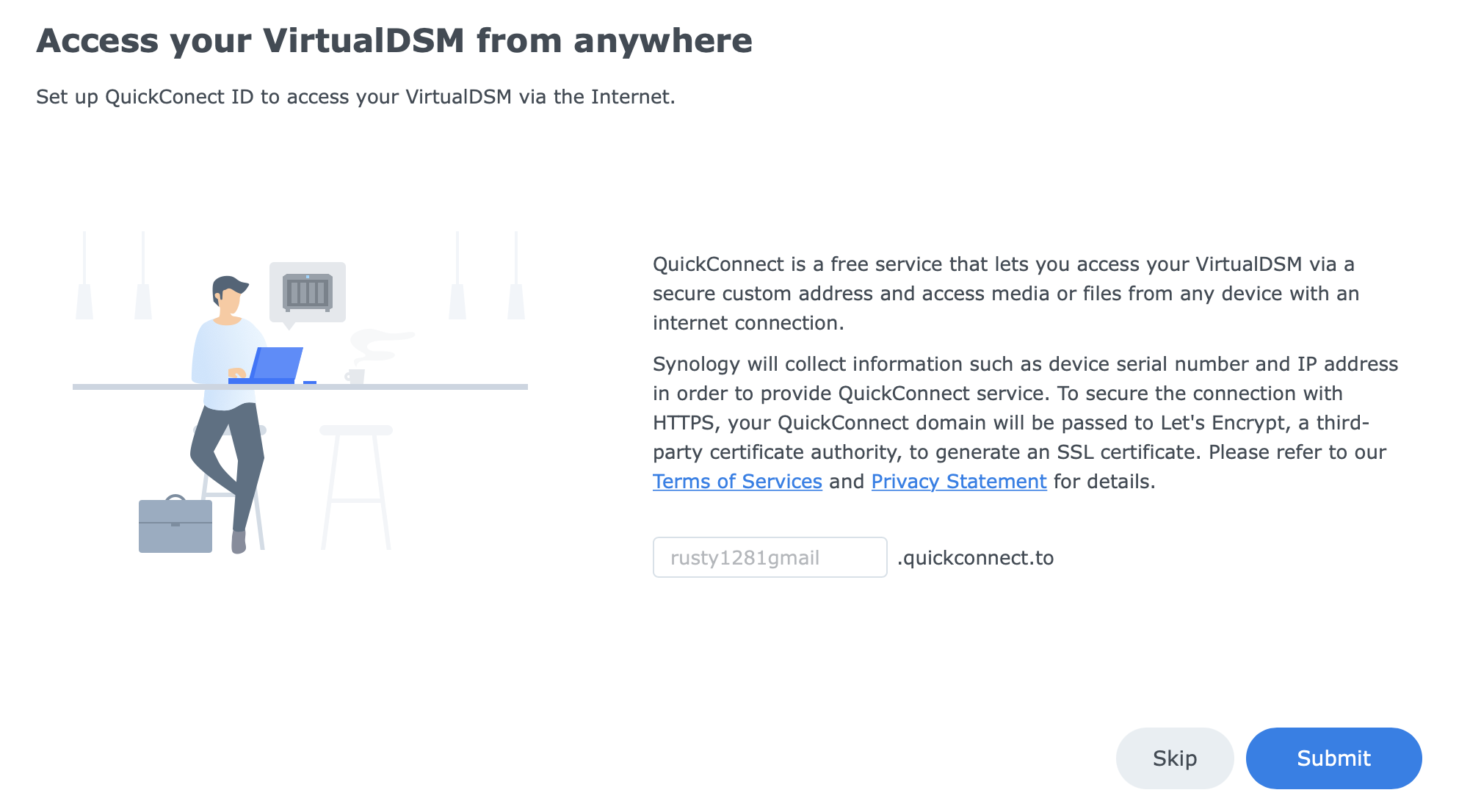
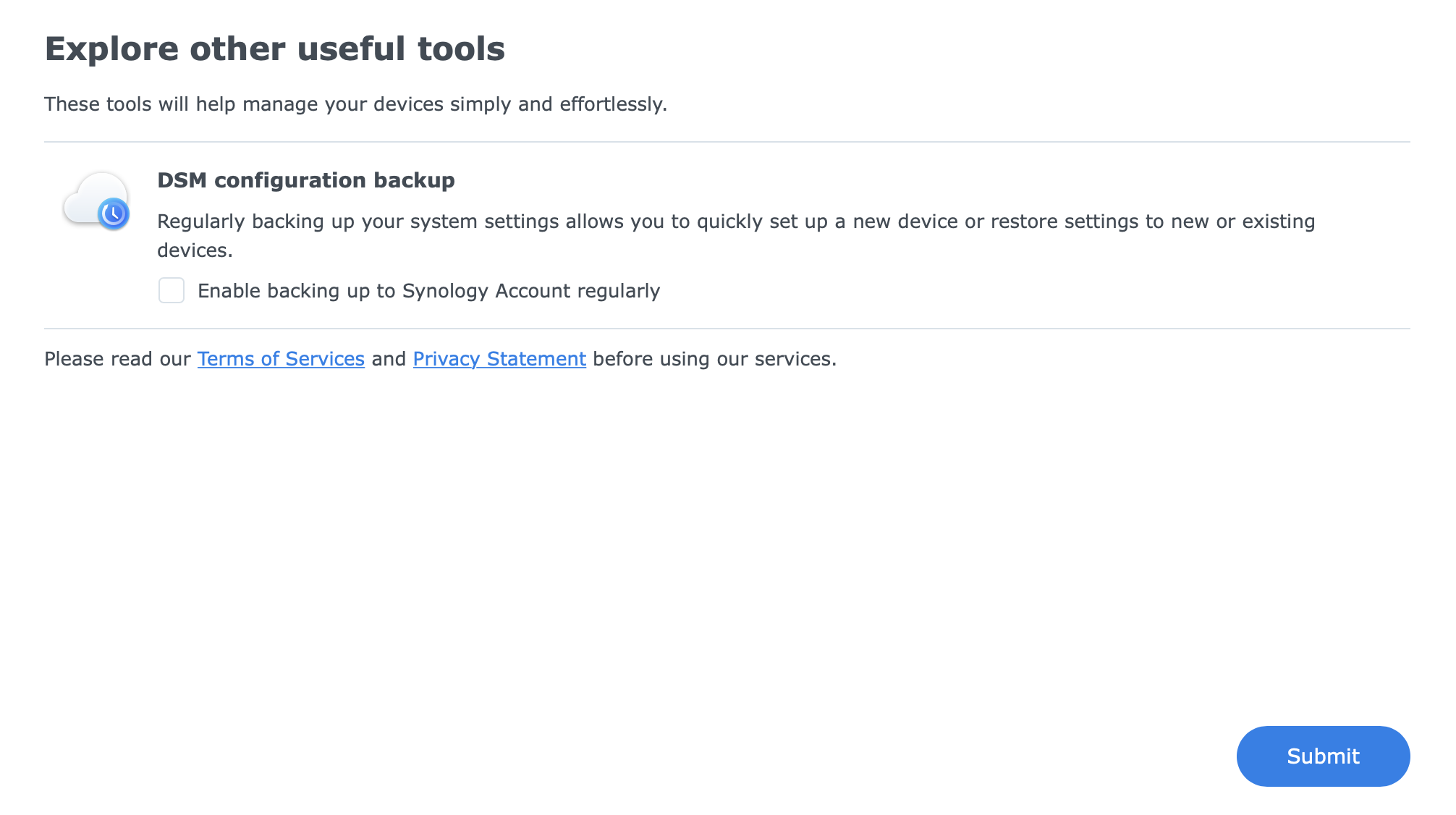
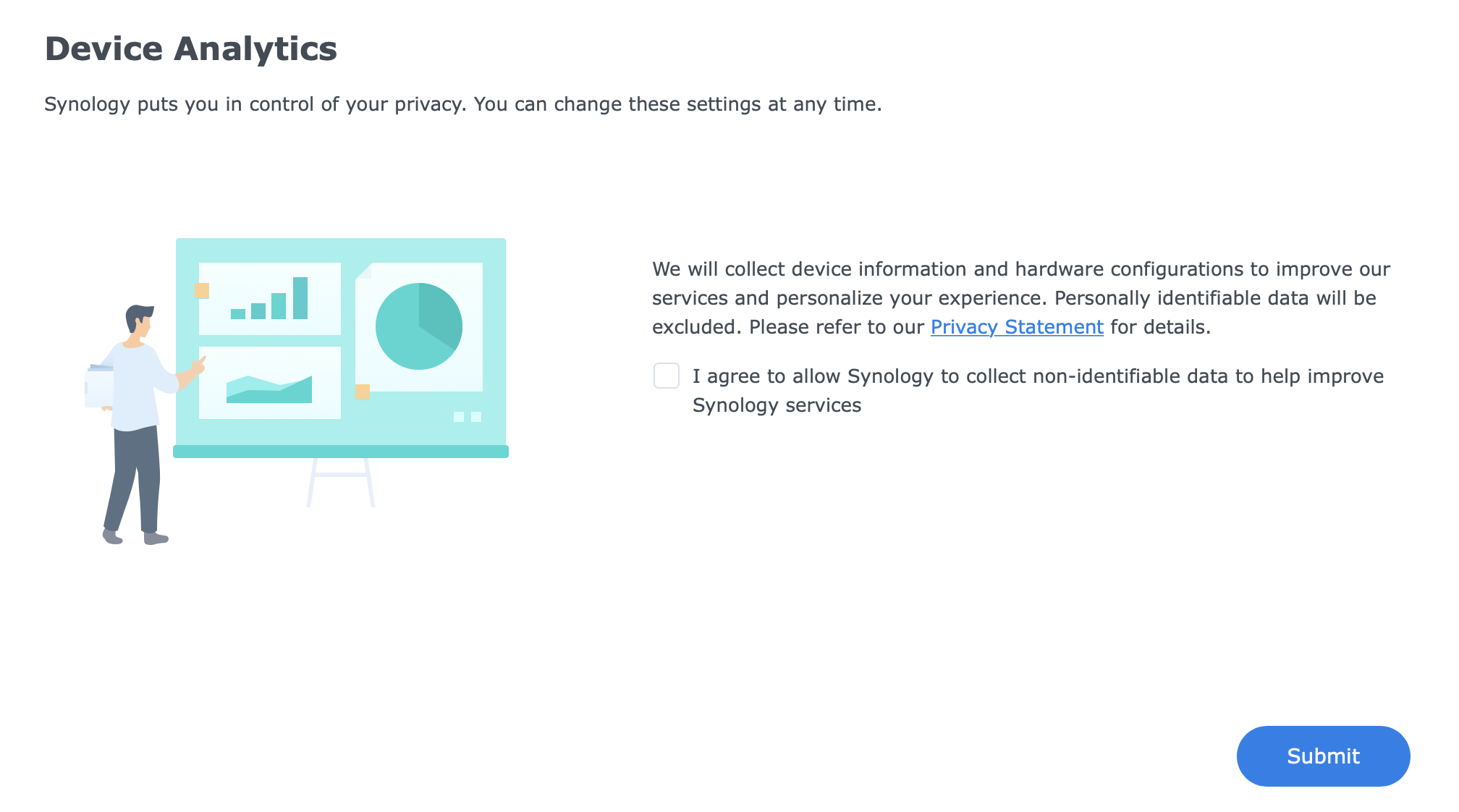
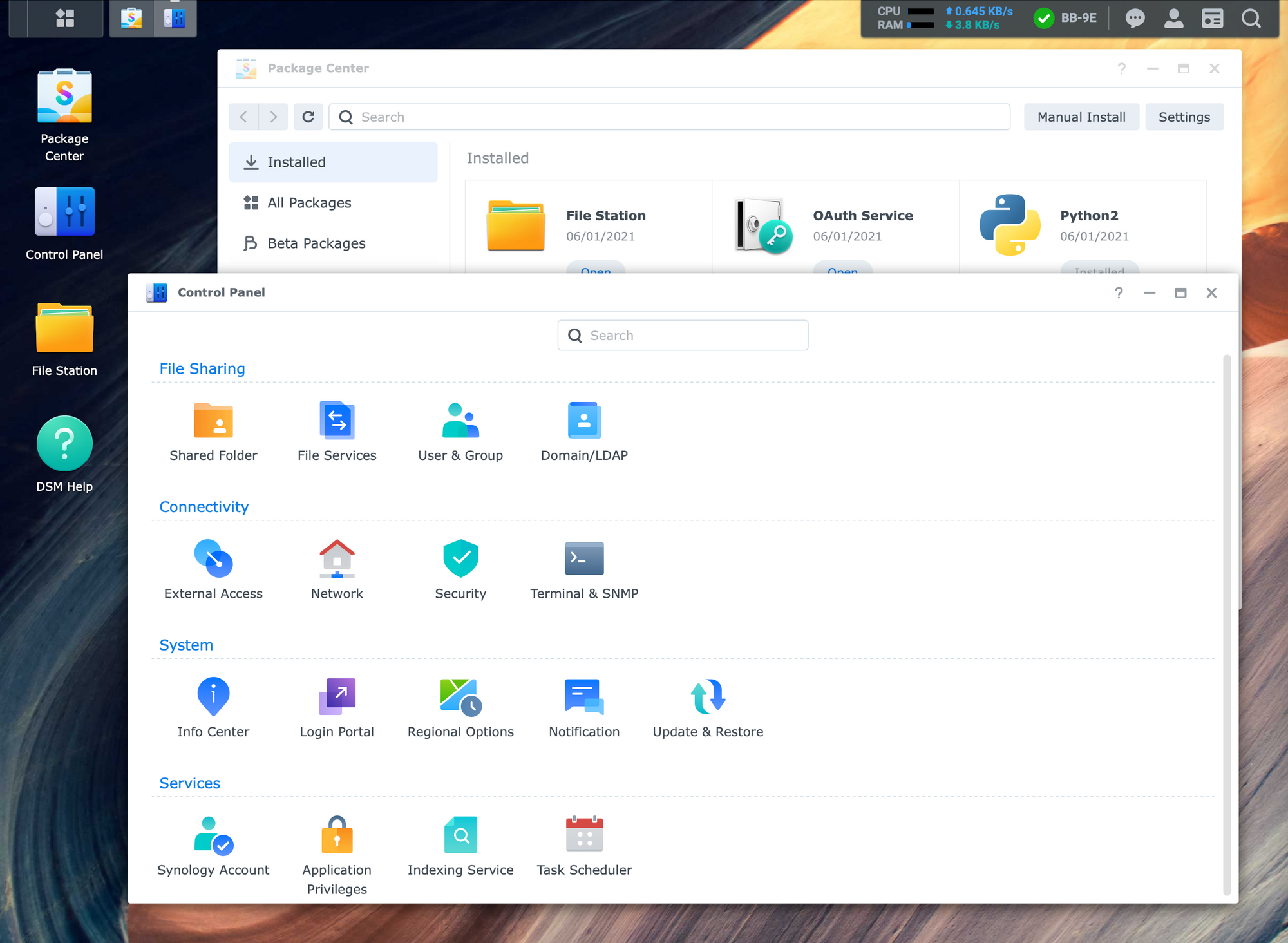
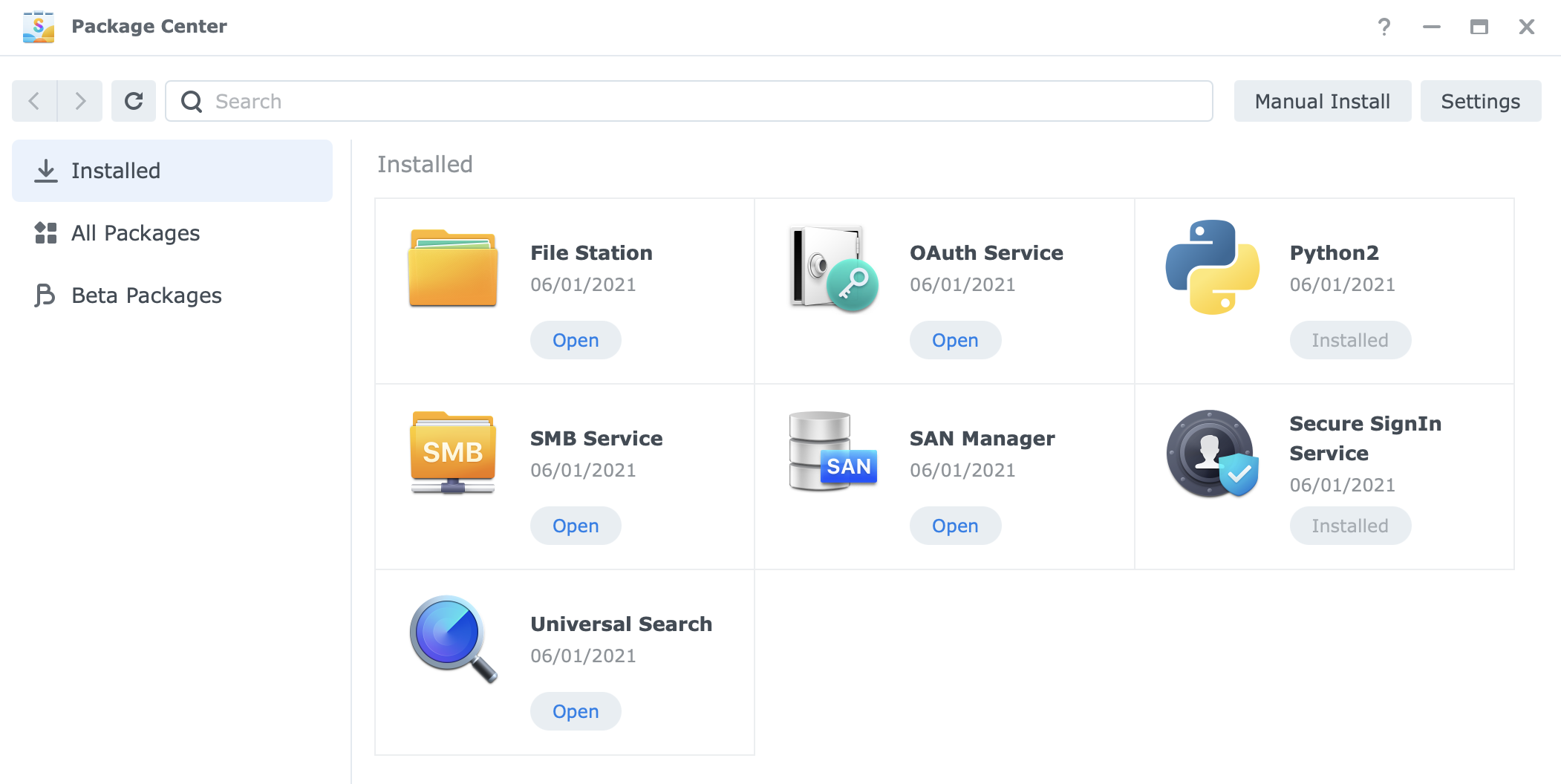
Software Compatibility
Please read the following guidelines before installing DSM-compatible software.
- Synology NAS with external network access - DSM packages will automatically upgrade to their compatible versions once your DSM has upgraded to DSM 7.0 RC.
- Synology NAS without external network access - Please go to Synology Download Center for manual downloads.
- For utilities/mobile apps, please go to Synology Download Center for manual downloads.
Applied model (so far):
21-series: RS2821RP+, RS2421RP+, RS2421+, RS1221RP+, RS1221+, DS1821+, DS1621+
20-series: RS820RP+, RS820+, DS1520+, DS920+, DS720+, DS620slim, DS420+, DS420j, DS220+, DS220j, DS120j
19-series: RS1219+, RS819, DS2419+II, DS2419+, DS1819+, DS1019+, DS419slim, DS119j
18-series: RS2818RP+, RS2418RP+, RS2418+, RS818RP+, RS818+, DS1618+, DS918+, DS718+, DS418, DS418play, DS418j, DS218+, DS218, DS218play, DS218j, DS118
17-series: RS217, DS1817+, DS1817, DS1517+, DS1517
16-series: RS2416RP+, RS2416+, RS816, DS916+, DS716+II, DS716+, DS416, DS416play, DS416slim, DS416j, DS216+II, DS216+, DS216, DS216play, DS216j, DS216se, DS116
15-series: RS815RP+, RS815+, RS815, DS2415+, DS1815+, DS1515+, DS1515, DS715, DS415+, DS415play, DS215+, DS215j, DS115, DS115j
14-series: RS2414RP+, RS2414+, RS814RP+, RS814+, RS814, RS214, DS414, DS414slim, DS414j, DS214+, DS214, DS214play, DS214se, DS114
13-series: DS2413+, DS1813+, DS1513+, DS713+, DS213j
Others: Virtual DSM
More info in the release notes:
https://www.synology.com/en-global/beta/2021_DSM_7_0_RC/release_note
Version: 7.0-41882 Release Candidate
(2021-06-01)
Important note
Before Update
- Before updating, your Synology NAS should be running DSM 6.2 or above versions.
- Reserve extra time to complete DSM 7.0 update. The DSM update takes 10 to 20 minutes, while package update may take more than an hour. The actual time depends on the computing power of your model, the number of media indexing files, and the number of packages installed.
- If you're performing a clean installation, make sure to complete the installation with find.synology.com or Synology Assistant 7.0-50029 or above.
- To avoid possible compatibility issues, users who installed Active Insight, Synology Photos, and Secure SignIn mobile applications during DSM 7.0 Preview/Beta programs should update the applications to the latest version after the DSM update.
- DSM 7.0 consumes more system resources, including memory. If your model has less than 1 GB of memory, updating to DSM 7.0 may affect system performance.
- For the models below, you can only download the upgrade patch from Synology Download Center because you won't receive notifications for this update on your DSM.
- 15-Series: RS815RP+, RS815+, RS815, DS2415+, DS1815+, DS1515+, DS1515, DS715, DS415+, DS415play, DS215+, DS215j, DS115, DS115j
- 14-Series: RS2414RP+, RS2414+, RS814RP+, RS814+, RS814, RS214, DS414, DS414slim, DS414j, DS214+, DS214, DS214play, DS214se, DS114
- 13-Series: DS2413+, DS1813+, DS1513+, DS713+, DS213
7. DSM 7.0 for FS, SA, XS/XS+, and DVA series models are currently under development and will be available in the next quarter.
DSM
- USB devices (Wi-Fi dongle, Bluetooth dongle, 3G/4G dongle, USB DAC/speaker, and DTV dongle) are no longer supported. If your Synology NAS is currently connected via a wireless dongle, it will be disconnected after the update.
- DSM 7.0 will end support for ext3. We strongly suggest backing up the data stored on your ext3 volumes and transferring the data to volumes with supported file systems before the update.
- DSM 7.0 by default disables NTLMv1 and enables NTMLv2 only, so SMB clients (e.g., Windows XP devices, media players, network printers, smart TVs, and IP cameras) won’t be able to access your Synology NAS. To restore the connection after the update, go to Control Panel > File Services > SMB > Advanced Settings > Others and enable NTLMv1 authentication.
- Creating SSD caches on block-level LUNs is no longer supported. Existing SSD caches for block LUNs will function normally after the update.
- NT4 domains are no longer supported. Current NT4 domains will be unavailable after the update.
- The URLs used by DSM when updating or running services have been modified. Please read this article and make sure that your firewall rules are configured appropriately.
- iSCSI Manager will become SAN Manager on DSM 7.0. Please refer to package release notes for more details.
- To provide comprehensive TLS support and ensure compatibility, the TLS/SSL profile level in Modern compatibility will automatically change to Intermediate Compatibility after the update.
- EZ-Internet is merged with Router Configuration in Control Panel. To set up port forwarding, go to Control Panel > External Access > Router Configuration.
- Python3 is merged into DSM as a built-in service. The original Python3 package will be unavailable in Package Center and you can remove it manually.
- The following DDNS providers are removed from the service provider list at Control Panel > External Access > DDNS:
- CloudNS, DNO-O-Matic, DNSEXIT, Dynamic DO!.jp, Joker.com, RU-CENTER, TwoDNS.de, Variomedia, Zoneedit.com
- The updated QuickConnect connection is secured with an SSL certificate, and your QuickConnect domain will be passed to Let's Encrypt for certificate application purposes. Please refer to the Privacy Statement for more details.
- Security Advisor by default enables Login Analysis and certain custom account detection check items after the update.
- Video conversion to FLV and MPEG-4 Part 2 formats on the following models is no longer supported.
- 20-series: DS120j
- 19-series: DS119j
- 16-series: DS216se
- 15-series: DS215j, DS115, DS115j
- 14-series: RS814, RS214, DS414, DS414slim, DS414j, DS214+, DS214, DS214se, DS114
- 13-series: DS213j
- Active Insight & Hybrid Share Service are build-in services available with DSM 7.0 Official, these two services will be automatically installed as Beta version after the update.
Packages
Synology Moments and Photo Station will be upgraded to and merged as Synology Photos. If you would like to use Synology Photos on your mobile devices, please install the iOS/Android app. See this page for more details.
Cloud Station Server and Cloud Station ShareSync will be upgraded to and merged with Synology Drive Server. If you are using any Cloud Station Suite applications (Cloud Station Server, Cloud Station Drive, Cloud Station Backup, Cloud Station ShareSync, or DS cloud), you must switch to their counterparts in the Synology Drive Suite to ensure compatibility. See this page for more details.
MariaDB 5 is incompatible with DSM 7.0. To update to DSM 7.0, please install MariaDB 10, migrate the database, and uninstall MariaDB 5 in Package Center first.
If you cannot find certain Synology approved third-party packages in Package Center, check this article for the latest status of the packages. For other third-party packages, please contact their developers for more information.
The following packages are no longer supported:
Cloud Station Server (replaced by Synology Drive Server), Cloud Station ShareSync (replaced by Synology Drive Server), Discourse, DokuWiki, Drupal, Drupal8, DVBLink, GitLab, GLPI, Hasplm, Java7, Java8, LimeSurvey, Logitech® Media Server, LXQt, Magento, Magento2, MantisBT, Moments (replaced by Synology Photos), Mono, Moodle, Node.js 0.10, Node.js 0.12, Node.js v4, Node.js v6, Node.js v8, Odoo 8, OpenERP 6.1, OpenERP 7.0, OrangeHRM, Orthanc, osCommerce, osTicket, PHP PEAR, Photo Station (replaced by Synology Photos), phpBB, Piwik, Podcast Generator, PrestaShop, PrestaShop1.7, PythonModule, Redmine, Ruby, Spree, SugarCRM, SVN, Synology File Manager, Tomcat6, Tomcat7, TVMosaic, Webalizer
What’s New
Storage
A new revision of Storage Manager:
Added visuals of Synology NAS models with their drive slots, expansion units, and built-in M.2 slots to help users view drive status.
Enhanced usability with a clearer display of the relationship between storage pools, volumes, and SSD caches.
Enhanced the setup process of Hot Spare and Data Scrubbing.
Added a feature to guide users through configuring newly inserted drives.
New features of storage pools, volumes, and drives:
Supports performing different tasks on different storage pools simultaneously.
Supports updating the firmware for Synology drives.
Enhanced the access performance of degraded RAID 6 by 70%.
Added display of the storage usage of each category item on Btrfs volumes.
Added a new Fast Repair mechanism to reduce the time needed for RAID repair based on storage usage and thus reduce the time of RAID degradation.
Added the ability to replace a drive in a healthy storage pool with an unused one without interrupting services or causing storage pool degradation.
Added the ability to automatically replace “Critical” or “Failing” drives in protected storage pools with Hot Spare.
Added the Auto Repair feature to automatically run a RAID repair when a malfunctioned drive is replaced with a healthy one in the same drive slot.
Added the ability to eject a storage pool on an expansion unit to ensure the safe removal of drives without interrupting system services.
Added the ability to mount storage pools from drives that are inserted after the device has been powered on without interrupting system services.
Supports customizing the low capacity notification for individual volumes when their available space drops below the specified value.
Added support for space reclamation schedules for Btrfs volumes.
New features of SSD Cache:
Added the ability to create and remove SSD caches without interrupting system services.
Added the new SSD Cache Advisor to monitor I/O accesses and provide more accurate capacity recommendations.
Added the ability to pin all Btrfs metadata to SSD caches to enhance the performance of accessing small files and shorten the response time when accessing files regularly.
Added the ability to activate automatic protection on SSD read-write caches with multi-drive fault tolerance.
Added support for the quick write-back mechanism, delivering a 30% faster synchronization from SSD caches to HDDs when automatic protection is activated.
Resource Monitor
Revamped the display of recorded performance metrics with a finer granularity of data points and the ability to focus on certain time points.
Enhanced monitoring transparency of system services by separating larger, unrelated processes.
Added the ability to manage currently accessed files and their connected users to better handle locked files.
File System/File Services
Supports enabling/disabling file compression for shared folders created on DSM 7.0.
Enhanced file compression ratio and added display for the current ratio for each shared folder.
Added support for cross-protocol locking between SMB and AFP.
Supports accessing encrypted shared folders via NFS.
Enhanced Btrfs performance and lowered I/O latency.
Modularized the SMB file service into a package.
Allows users to enable/disable SMB transfer logs for permission changes, providing more flexible transfer logs.
Enhanced the encryption performance by up to 10% on certain models with the x86 platform.
In Windows File Explorer, users can now search for the files and their content in indexed folders.
User Management
Enhanced the password policy. Passwords must exclude username and description, include both upper-case and lower-case letters as well as numerical digits. The minimum password length is 8 characters.
Added the ability to delegate predefined administrator roles to non-administrator user accounts and allow them to manage certain services and system settings, offering more flexible permission management.
Added the ability to require imported users to change their passwords after their initial DSM logins.
Added the ability to assign user accounts from import lists to specific groups.
Domain/LDAP Integration
Enhanced LDAP client authentication performance by reducing the number of queries sent with a caching mechanism.
The following services and packages now support UPN logins: Synology Assistant, Hyper Backup, Synology Mail Server, Synology Calendar, and Shared Folder Sync.
Enhanced domain database synchronization performance by syncing only altered data.
Security
Added the ability to block USB and console ports.
Enhanced QuickConnect connection process to strengthen security.
Provides only TLS 1.3 support for the Modern Compatibility option for TLS/SSL profile level.
Added the ability to set 2-factor authentication as mandatory for specific users or groups.
User Experience
Enhanced user experience for DSM first-time installation and Synology Account related service setup (e.g. QuickConnect).
Added the ability to automatically install important DSM and package updates.
Added information and usage tips about security, notification, and other recommended settings in DSM Help.
Added the ability to back up DSM system configuration to a connected Synology Account.
Added the ability to export folder permissions reports.
Added support for application webhook integration to send system notifications to Synology Chat and other third-party applications.
Added severity levels to notifications for better categorization of events.
Enhanced user interface responsiveness to launch installed packages and services faster.
Enhanced login performance when connecting from external networks.
Enhanced user experience for package update processes by displaying the update status with package icons on the DSM desktop.
Supports resetting the passwords of all user accounts in the administrators group by pressing the RESET button on Synology NAS for 4 seconds.
Revamped the Service tab at Control Panel > Info Center. The tab focuses on the status of enabled services and packages, including local ports, router ports, and firewall permissions.
Enhanced Control Panel usability by reorganizing related functionality together:
Added a new Synology Account tab to consolidate future services provided through Synology Account.
Consolidated Domain/LDAP options to be configured in a new unified wizard.
Consolidated QuickConnect settings into the External Access tab.
Consolidated User and Groups settings.
Consolidated Theme and Application Portal options into Login Portal tab.
Consolidated email notification options into Notification > Email tab.
Consolidated WS-Discovery into File Services > SMB.
Consolidated Network > DSM Settings into Login Portal > Web Services.
Relocated the SMB Server Signing option to File Services > SMB > Advanced Settings.
Moved Shared Folder Sync into the File Services tab.
Moved the Enforce 2-factor authentication option into the Security tab.
Modularized DHCP Server into a package.
Limitations
When you click Notifications > Show All on your desktop right after the update, you will only be able to see the 500 recent notifications. However, this won't occur for future notifications.
DSM 7.0 no longer supports sending push notifications via Synology’s email server. To set up email notifications, go to Control Panel > Notification > Email.
DDSM is incompatible with DSM 7.0. To continue using DDSM, you should retain the current DSM version. To update to DSM 7.0, please delete DDSM first.
The "Shut down UPS when the system enters Standby Mode" function is only available on Omron UPS.
The AFP service is disabled by default after a clean installation.
After the update, if your Synology NAS is a managed server in Central Management System, the CMS host must run DSM 6.2.4 or above and CMS 2.1.4 to be able to manage important DSM updates and package updates on your device.
Central Management System no longer supports managing Synology NAS with DSM version earlier than DSM 6.2. Please update all managed servers to DSM 6.2 or above first. Managed servers that are unable to update to DSM 6.2 should be disjoined from the CMS host before the update.
More info on this version at a later date.





